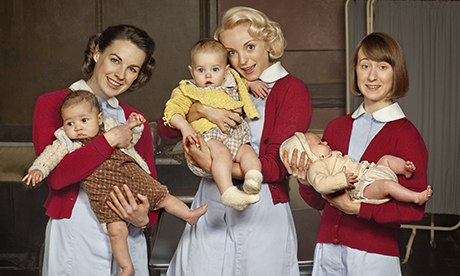
Despite having a razor-sharp script and the sprightliest nuns this side of the Sound of Music, BBC period drama Call the Midwife might not be NHS commissioners' first port of call for best practice in service design.
Nevertheless, after a series of concerning revelations about NHS maternity services – which have led the Daily Mail to lament Britain's "Midwife Crisis" – commissioners would do well to watch closely as Call the Midwife returns to screens later this month. For despite its grimmer moments, the programme showcases a kind of relationship-based midwifery that is in serious danger of extinction; despite evidence it is cheaper and more effective than other delivery models.
In November the National Audit Office revealed that mistakes in maternity care account for a third of NHS negligence payouts, which have risen by an astonishing 80% in the last five years. There is a strong argument that one of the causes of this is the erosion of midwives' relationships with the women they treat. The fragmented way the system delivers care makes it harder to provide high quality midwifery services.
In the decades since responsibility for midwifery passed from local authorities to the NHS, the midwife's role has been pushed out of the community and into hospital wards. This has created a service that provides staff to fill buildings rather than care for women and treats childbirth as an illness, rather than a life experience.
For the majority of women in this country childbirth is very safe, but it is unpredictable. To respond effectively and proportionately to problems in pregnancy, and especially in labour, a midwife must make an informed clinical judgment about the mother's health and wellbeing. This kind of decision is better made by a midwife who knows and understands the woman she is caring for.
The characters in Call the Midwife practice along the lines of what is now known as caseload midwifery – one-to-one maternity care which sees a single midwife look after a woman throughout her pregnancy, during labour, and in the weeks directly after birth. The traditional argument against this approach has been that it is simply too expensive; that it is cheaper to encourage women to visit one central hospital staffed by a revolving cast than to pair them with a single, community-based midwife.
But recent research has challenged this received wisdom. A report from Sydney University published in The Lancet in September showed that using a single caseload midwife could actually reduce healthcare costs by more than £300 per birth. Reproducing this approach countrywide could help the health service find money for the 2,300 additional midwives the NAO concluded it needs; not to mention giving expectant mothers more consistent support throughout their pregnancy.
The study also proved that caseload midwifery is more clinically effective. The study's findings showed that women supported by a single, named midwife throughout their pregnancy were more likely to experience a spontaneous labour, suffered less blood loss and needed lower doses of painkillers.
These results expose the myth that midwifery care in the community – especially around birth, at home or in a midwife led unit – is somehow less safe. Alongside the excellent work of the Birthplace Research Programme at Oxford University's National Perinatal Epidemiology Unit, the findings undermine the assumption that care must be delivered through ever more restrictive guidelines and policies to ensure that it is safe.
There is a fear that if you allow midwives to be truly autonomous and take responsibility for their clinical decision-making, the risk is that they will deliver poorer care and make mistakes. In fact the opposite is true: a top-down, tick-box culture of quality assurance is no substitute for a genuine relationship between a midwife and expectant mother. The system must start to trust clinicians again.
An overly bureaucratic approach to midwifery is not just letting mothers down – it's putting the whole profession under strain. The Royal College of Midwives announced recently that nearly a quarter of all midwives in Britain have thought about leaving the occupation in the coming year; with many citing dissatisfaction with their NHS trust even as they restated their commitment to the women in their care. These are worrying figures for Britain's already short-staffed maternity services.
To resolve Britain's so-called midwife crisis, the government should remember the core principles of its healthcare policy: empowering clinicians; bringing care closer to communities; and freeing NHS staff of burdensome central control. Encouraging NHS commissioners to consider the benefits of caseload midwifery while supporting pilot programmes to build a strong UK evidence base would represent positive progress.
Effecting this kind of culture change is no mean feat; especially in the NHS. But community midwifery can point to a strong evidence base, a proud history, and a natural fit with government policy.
Looking for a solution for Britain's sputtering maternity services? Call the midwife, of course …
Annie Francis is chief executive of Neighbourhood Midwives
This article is published by Guardian Professional. Join the Healthcare Professionals Network to receive regular emails and exclusive offers.

